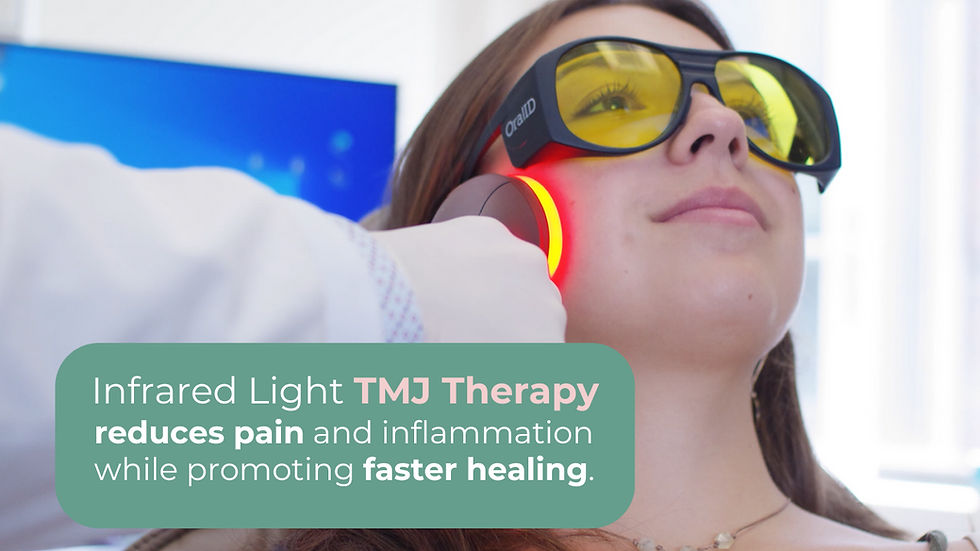TMJ Disorder Treatment in New York City
Serving Midtown East, Upper East Side & Surrounding Areas
Causes of TMJ Disorder (TMD)
TMD can occur after trauma to the jaw, local cartilage disk dislocation, or damage to the cartilage from arthritis or other connective tissue diseases. Other patients have bite misalignment due to a lack of dental and orthodontic intervention, or interference from restorations that do not fit properly in the mouth and cause the muscles to move abnormally. The most common TMJ disorder is bruxism — stress-induced clenching or grinding of the teeth during sleep, which creates dysfunction in the lower jaw. The force exerted on the teeth can range from 50-160 lbs., and sometimes well beyond (the most ever measured was 975 lbs.), often resulting in significant structural problems. In fact, under stress, the limbic system can increase the maximum force exerted up to six times.
The Temporomandibular Joint
The temporomandibular joint (TMJ) is an anatomical feature found in both sides of the lower jaw.
The TMJ connects the jawbone to the skull at a socket, and the jaw muscles allow the mouth to function like a sliding hinge, opening and closing to allow different movements. There are multiple components to this area of the jaw, and if any part of the TMJ is not working correctly, dysfunction can occur.
People with TMJ disorder (also called TMD for temporomandibular disorder) experience pain of the joint and surrounding muscles.
Once joint alignment is compromised, sufferers may experience chronic pain and discomfort, as the temporomandibular joint is the most frequently used joint in the human body.
Interesting Facts About TMJ Issues and Nightguards
Diagnosing TMJ Disorder and Irregularities of the Jaw Joint
Along with physical symptoms, Dr. Lazare can assess a patient for TMJ disorder with a thorough evaluation. He may view and feel the area, noting any signs of inflammation that could be attributed to improper function of the lower jaw. He may also determine if there is regular movement of the jaw in each direction — forward, back, up, down, and side-to-side. If these movements are accompanied by sounds, Dr. Lazare can hear them during the exam. Sometimes, X-rays or other imaging is a necessary step in diagnosing TMJ disorder.
Symptoms of TMJ Disorder
There are specific side effects that occur as a result of TMJ disorder. While some are under the impression that noises produced by the jaw, like popping, clicking, or grinding sounds are an issue, this is actually very common. When these noises are accompanied by pain, discomfort, or limited movements of the jaw, there may be problems with the temporomandibular joint. When the TMJ is not functioning properly, people may notice pain in one or both side of the jaw joint when at rest or chewing, stiff jaw muscles, or earaches. In some cases, patients even experience lockjaw. Sometimes, the issue creates pain in the face and neck, or earaches that may at first seem unrelated. Headaches that occur in the morning may also be the result of TMD. Aside from pain, sufferers of TMJ disorder may also notice that their bite has changed, and the teeth no longer fit together as they once did.
Candidates for TMJ Disorder Therapies
Patients interested in treatments for their TMJ disorder can schedule an appointment to meet with Dr. Lazare to discuss their symptoms and learn more about treatment options. Dr. Lazare will collect and review a full medical and dental history and perform an examination to determine the source of discomfort. Dr. Lazare may also capture x-rays or other types of images to better understand jaw function and any underlying issues. The best candidates for TMJ disorder treatment are those who are willing to try more conservative approaches, and agree to follow at-home regimens, such as the daily use of a night guard.
Explore Our Full Range of Dental Services
Explore the full range of services offered by Dr. Marc Lazare’s dentistry practice, located in Upper East Side, New York. Whether you're looking for advanced cosmetic treatments, preventative care, or specialized biomimetic solutions, our team is here to help you achieve a healthier, more radiant smile. Discover how we can enhance your dental health and transform your smile—browse our services today!
Can TMJ Disorder Be Cured?
What Is the Main Cause of TMJ?
Is My Headache Related to a TMJ Disorder?
Why Is a Night Guard the First Method of Treating TMJ Disorder?
Is TMJ Disorder a Condition That Will Last Forever?
What Should You Do if Your Jaw Starts Making a Popping Sound When You Open It?
Frequently Asked Questions
Contact us
Address
507 Madison Avenue, Suite 1212, New York, NY 10022
Phone
(212) 861-2599
Office Hours
Monday–Thursday: 9:00 AM – 5:00 PM
Friday: 9:00 AM – 2:00 PM
Saturday & Sunday: Closed










